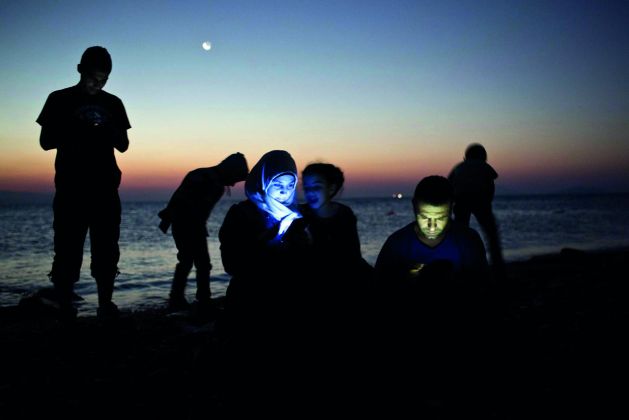 The 2016 Istanbul Design Biennale, titled Are We Human?, charted the changing role of design through time, from the first tools to modern-day social media.
The 2016 Istanbul Design Biennale, titled Are We Human?, charted the changing role of design through time, from the first tools to modern-day social media.
The architectural historian and theorist talks about architecture and medicine, working from bed and the end of the office era.
Beatriz Colomina is an architectural historian and theorist. She is a professor and director of graduate studies in the School of Architecture at Princeton University, and her books, which have been published in more than 25 languages, include Are We Human? Notes on an Archeology of Design (2016) and Manifesto Architecture: The Ghost of Mies (2014).
Colomina has lectured extensively at universities and art museums throughout the world and has curated a series of international exhibitions. Based on archival and oral history research, her exhibitions function as interfaces to communicate this work to a wider audience, through physical installations, digital platforms and publications. She was the chief curator of Curated by Vienna: The Century of the Bed (2014), a show involving a network of 22 art galleries in Vienna. She also co-curated the 2016 Istanbul Design Biennial.
On the occasion of her lecture at the Royal Institute of British Architects in London, Icon’s Editor, Priya Khanchandani, spoke to her about the relationship between architecture and health, which
is the subject of her latest book, X-Ray Architecture (2019), uncovering questions about the future of architecture itself.
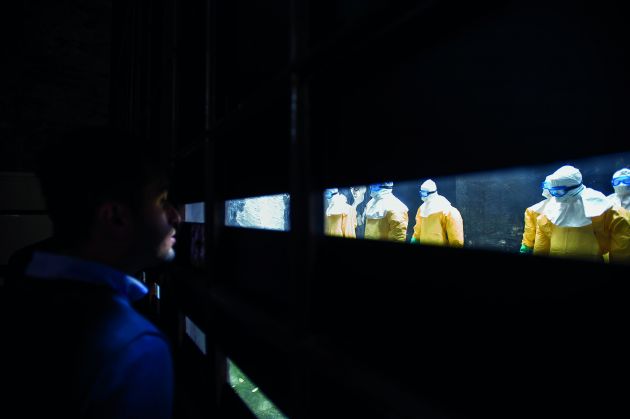 Ebola, an installation based on a photograph taken by Dominque Faget at a Liberian hospital in 2014, at Istanbul Design Biennial, 2016.
Ebola, an installation based on a photograph taken by Dominque Faget at a Liberian hospital in 2014, at Istanbul Design Biennial, 2016.
PRIYA KHANCHANDANI: Clearly the relationship between people and architecture has a long history. What made you want to focus on illness and health in your latest book, X-Ray Architecture?
BEATRIZ COLOMINA: Well, it goes back to the very first year that I arrived in New York and I found myself in a completely interdisciplinary situation at the New York Institute for the Humanities. I thought, ‘What would it really mean to expand our view of architecture and start considering how architecture plays a role in health, how architecture is depicted in novels, how people understand the spaces in which they are living?’
PK: You reflect on how historical architects and theorists have talked about health – for example, le Corbusier saying that if we continue to live this way, essentially, we will all need a sanatorium of sorts. Is that the direction that architecture is going in?
BC: No. The interesting thing is that the situation with modern architecture and its relationship to the medical made me think about how long we have had this obsession with health. I ended up concluding that we’ve always been obsessed with it. Vitruvius, the first architectural theorist, already insisted that all architects should also study medicine, because their most important question is that of health and how architecture corresponds to health.
PK: I thought it was interesting that you drew this analogy between the architect and the doctor as someone we go to; we have an expectation that they’ll deliver something. I wonder if, in the same way, you feel architects have a responsibility to look after us, as human beings.
BC: Yes, of course.
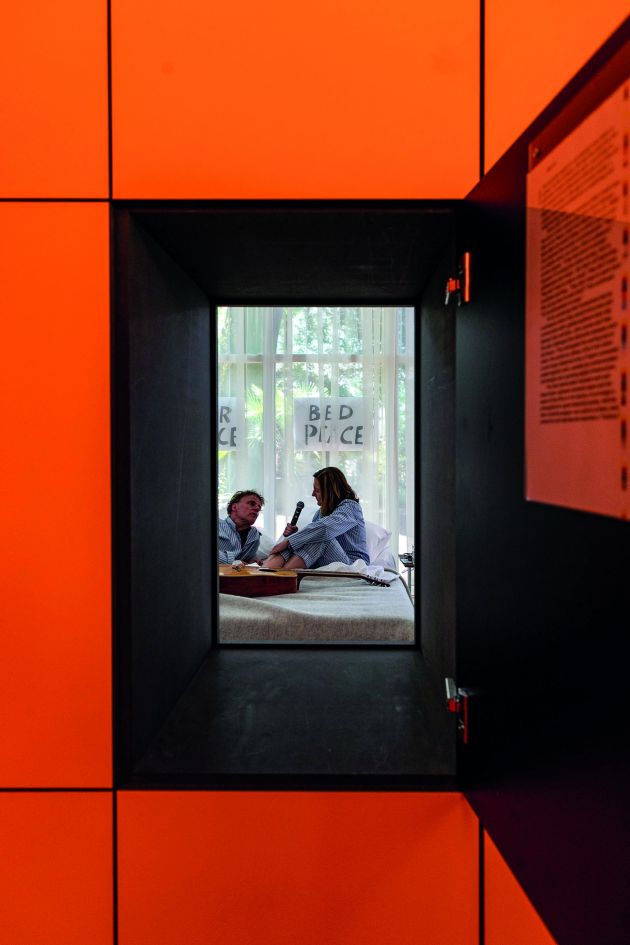 Colomina’s Bed-in at the Dutch Pavilion, 2018 Venice Architecture Biennale. Photo: Daria Scagliola.
Colomina’s Bed-in at the Dutch Pavilion, 2018 Venice Architecture Biennale. Photo: Daria Scagliola.
PK: And that goes beyond functionality?
BC: Yes, but that intimate connection with medicine, we seem to have lost it. So it was interesting for me in this book to look at how it has gone away. It’s very consistent throughout the centuries. There’s the Renaissance obsession with the body, whether it’s Leonardo or the design academies in Florence. Then there’s Viollet-le- Duc in the 19th century, and you can go through the 20th century and research the obsession with health.
More recently we seem to have dropped the ball. And I think that’s very serious because in fact we are now in an age of bacterial strains that are resistant to antibiotics. So they need to rethink architecture, because this architecture that we thought was healthy has, in a way, turned against us.
Sick syndrome building, for example, was discovered in the 1970s, when people, particularly women – and that’s why it was not taken seriously for a long time – working in an office building started to complain about vague symptoms, like headaches and nose problems, and this and that. And they didn’t take it seriously, but it was a problem because these buildings didn’t breathe.
PK: In a society where big architecture is driven by capital and these office buildings that you’re talking about are commissioned by big companies who want work, and productivity, to come before everything else, how do we defeat this?
BC: A sick worker is not a very productive worker, so it’s in their best interest, first of all. Then second, what we call an office building, and all of these questions, is changing radically. There is no such thing. This is not the direction we are going in, obviously, and this was the subject of a lecture I gave the other day at Westminster University about the new conditions of labour. In the gig economy, there are tons of people working from home who do not necessarily go into an office nine to five. So you really have an army of these workers that are working from their beds.
Now the health of these workers is also super-important. But this idea of the concentrated office building and the nine- to-five is obviously on its way out.
PK: You once wrote that you read that young professionals in New York are using the bed as a place of work 80 per cent of the time. What did that make you think?
BC: That’s what I read in the Wall Street Journal and that’s what prompted the research that I presented the other day in my Westminster lecture, which was in honour of [architectural historian] Robin Evans. I started to think about the conditions of occupation today, and how our bodies behave in a space, because Evans wrote a lot about the invention of privacy and spaces such as corridors, and how all of this is to do with the separation of the place of work and the place of living within industrialisation.
But now, in the post-industrial moment, we seem to have returned to the home in some way, and even to the bed, to work in the most intimate space. So the whole question of what is private and what is public is being inverted.
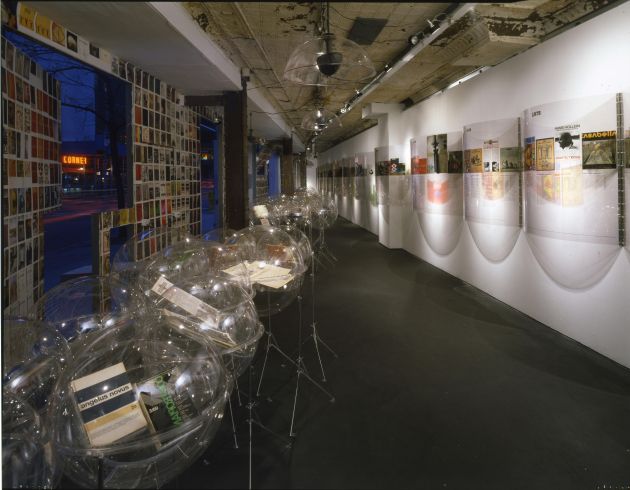 Clip/Stamp/Fold, an exhibition exploring the influence of self-published 1960s and 70s architecture magazines, New York, November 2016.
Clip/Stamp/Fold, an exhibition exploring the influence of self-published 1960s and 70s architecture magazines, New York, November 2016.
PK: You’ve done various experimental works with the bed – hosting conversations in a bed, for example. Do you think we can rethink this site within the domestic space, what it means and how it’s used?
BC: For me it was a question of looking back at it historically. When is it that we started to work in bed? I started to think about all these other examples of artists and creative people, writers in the 20th century working from bed, people from Marcel Proust to Truman Capote. But also characters like Hugh Hefner doing the entire Playboy magazine from his bed in Chicago.
And then I ended up with Yoko Ono and John Lennon and their bed at the Hilton hotel in Amsterdam during their honeymoon, which they used as a kind of protest. And the experiment that I did with the bed was shown in the Dutch Pavilion at the Venice Architecture Biennale in 2018, which was dedicated to work and labour. We reconstructed the entire room and the bed of the Hilton and the idea was to interview everybody that was moving around the Biennale, all these architects that were participating. I interviewed them about the question of what the bed is in our times.
Hans Ulrich Obrist from the Serpentine Galleries was one of the participants because he was hanging around the Biennale. I invited him and he said, ‘Why don’t we do it at the Serpentine?’ So a year ago, in the fall, during the [24-hour interview] marathon that he normally does, we did this bed-in marathon inside Frida Escobedo’s Serpentine Pavilion.
PK: What implications does this have for the future of architecture? Should we see beds put in offices and desks put in bedrooms?
BC: A little bit of this is happening, whether we are participating in it or not. There are all these companies now dedicated to producing devices such as Metronaps, for example, which are these pods where you have a nap. And entire new typologies are popping up in cities. In New York, for example, there are new hotels that are like love hotels, in the sense that you can check in for half an hour only. You go into one of these pods in which you connect your phone and you have music, you lie down, you relax, you take a nap. And you can also have lunch at the same time. And people are choosing that over the typical lunch break, because they are sleep-deprived.
PK: In the first office I worked in, in a new skyscraper in Canary Wharf, there was a legend that there were sleeping pods, which we’d never seen. And we were scared of them. Because the idea was that they were there to make us work harder and spend more time in the office. There was a hairdresser in the office, there was a post office in the office. Are these devices simply tools of capitalism, above comfort?
BC: Totally, yes. They are all designed so that you work harder.
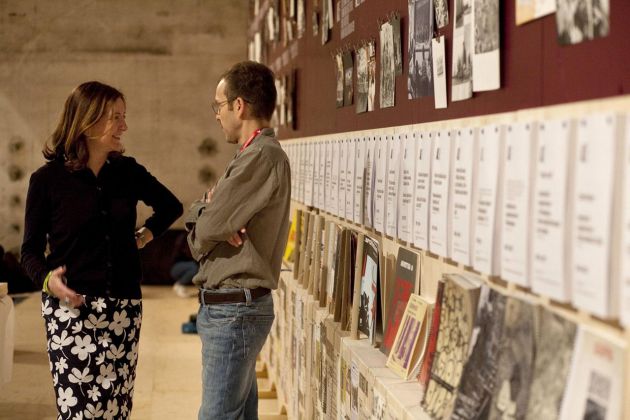 Radical Pedagogies exhibition, 2019. The ongoing research project examines the role of pedagogical experiments in 20th-century architecture.
Radical Pedagogies exhibition, 2019. The ongoing research project examines the role of pedagogical experiments in 20th-century architecture.
PK: So is there something to be said for the old ways?
BC: No, the old ways are also terrible. We cannot go back anyway; we don’t work that way anymore. There have been very serious studies that demonstrate that new technologies allow us to work in different ways than the nine-to -five.
PK: Do you think architecture is behind?
BC: Yes. Right now it is totally behind. It’s stuck in some story that is not working anymore.
PK: How can it change?
BC: Well, maybe they can start thinking about what is happening – the walls in front of their noses. It will be interesting when they start paying attention. This question of the bed was, for me, a provocation, to say to people, ‘Okay, so if it is true that this percentage, that this huge amount of people are now working from bed, what is the bed for you?’ What are the conditions of work today?
What are the conditions of living? Just think about it. Because you have schools of architecture that could still set a project where students do an office building, even though maybe the era of the office building is over.
PK: They could be designing something more hybrid, more open-ended.
BC: Exactly. Or they could ask, what is the future? Because we have always been in the business in architecture of thinking about the future, at least the immediate future. A project is a projectile which is sent to the future. And anyway, architecture takes so long to produce that you always have to be a little bit of a futurologist.
This article appears in Icon 199, which explores the contemporary countryside.


















